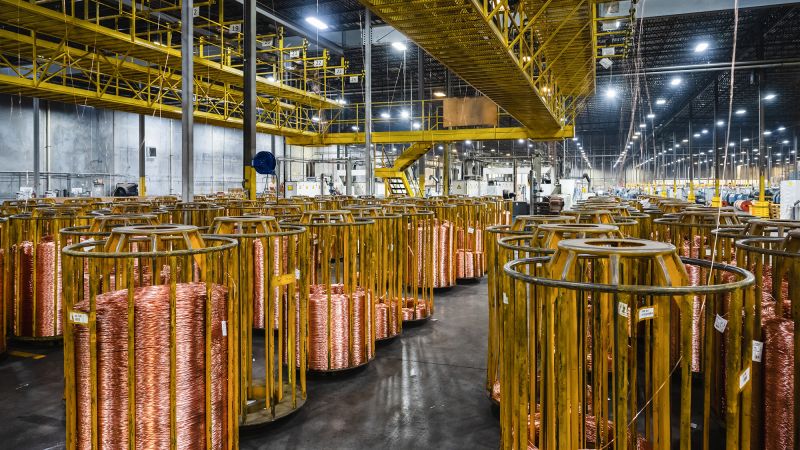The impact of governmental policies, especially tariffs on essential commodities, often reverberates throughout the economy. Among these commodities, copper stands out as a critical component in various industries, including electronics, construction, and automotive. The recent announcement by President Donald Trump regarding a 50% tariff on copper imports slated to begin on August 1 has ignited debates among economists and industry experts about its implications on American manufacturing and inflation.
When Trump announced his intention to impose a substantial tariff on copper imports on July 8, 2024, it sent shockwaves through the market as prices soared by 13% in just one day, reaching a staggering $5.69 per pound—the highest price recorded since data collection began in 1968. This sudden surge in copper prices raised alarms regarding the economic consequences, especially since copper is not only vital for manufacturing but is entrenched in the infrastructure of daily life.
Several industry experts, including Ole Hansen from Saxo Bank, caution that such a drastic tariff effectively acts as a “massive tax on consumers of copper.” The rationale behind the tariff is couched in national security concerns, with the Trump administration claiming the need to enhance domestic copper production. However, the reality is complex. The U.S. currently imports over 50% of its copper needs, primarily from countries in South America, including Chile and Peru. Industry reports suggest that domestic copper mining takes an average of 32 years from ore discovery to production, creating a significant lag in the ability to increase domestic supply.
Hansen further underscores the potential fallout from these tariffs, suggesting they could render U.S. manufacturing and infrastructure significantly more expensive. As copper plays a crucial role due to its excellent conductivity, it is found in a plethora of essential items, from the chips in mobile phones to piping in homes and engines in vehicles. The presence of copper is undeniable in daily life, as noted by Rob Haworth from US Bank’s asset management group.
The forthcoming implementation of these tariffs leaves businesses and investors in a precarious position, unsure of how the landscape will shift if the 50% tariff is indeed enacted. Experts warn that an escalation in copper prices could be detrimental across various sectors heavily reliant on the metal, including construction, electronics, and automotive industries. Economic theorists speculate that the resultant higher costs may subsequently be passed on to consumers, inducing inflationary pressure in the economy, with repercussions felt by ordinary citizens.
The anticipated production costs are compounded by the fact that copper has few viable substitutes in many applications. While alternatives like aluminum exist, their properties—especially flammability and lower conductivity—render them less feasible for critical applications involving copper. The consensus among economists such as Maurice Obstfeld, a former member of President Barack Obama’s council of economic advisors, indicates that these tariffs could serve to harm U.S. manufacturing by pumping up prices rather than stimulating domestic production.
Industrial buyers and traders have stockpiled significant quantities of copper in anticipation of the tariffs. It is estimated by Morgan Stanley that around 400,000 tons were delivered to the U.S. in the first half of 2025. While these measures may temporarily buffer the market against potential shocks, experts echo concerns that such stockpiling will not be sustainable. Eventually, the U.S. will again need to source copper abroad, incurring costs that could push inflation rates even higher.
The anticipated impact of Trump’s tariffs also has ramifications extending beyond immediate economics. With steel and aluminum tariffs already in place to support U.S. supply chains, policymakers may find that a more balanced approach, perhaps using lower tariffs or incentives such as subsidies, could achieve the desired outcome of bolstering domestic manufacturing without instigating rapid price inflation.
Ultimately, the ongoing situation surrounding copper tariffs reflects underlying tensions within U.S. trade policy and highlights the complexities in achieving a balance between national security needs and robust economic health. Policymakers will need to navigate these waters carefully, considering the long-term health of the American economy in light of immediate, and potentially damaging, tariff decisions. The discussion surrounding these tariffs serves as a critical reminder of how interconnected global supply chains truly are and emphasizes that economic policy rarely yields straightforward results.











